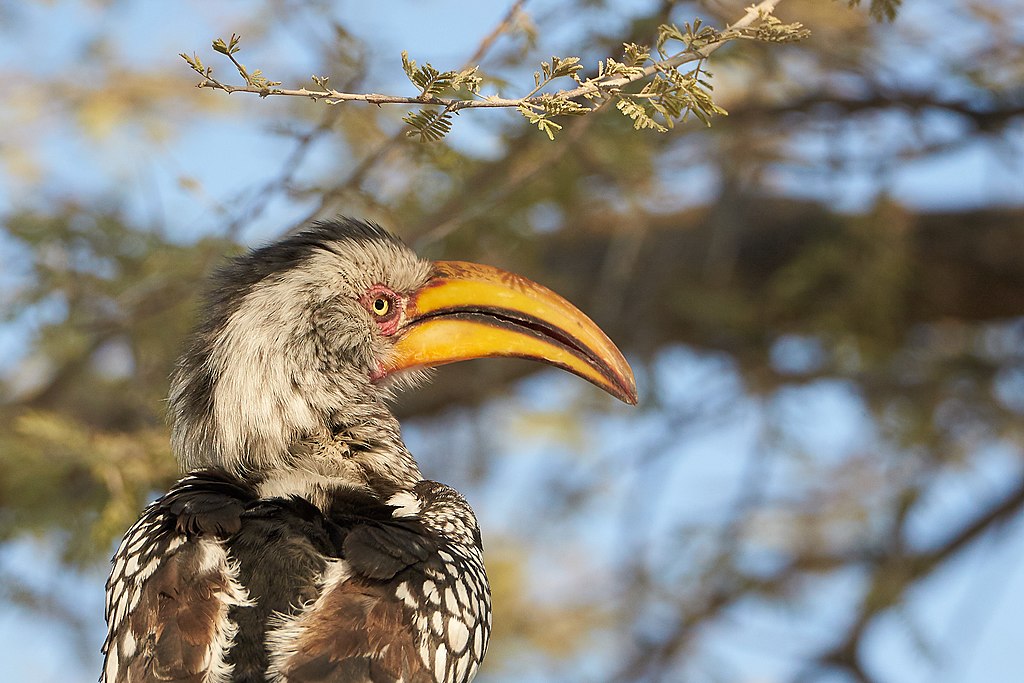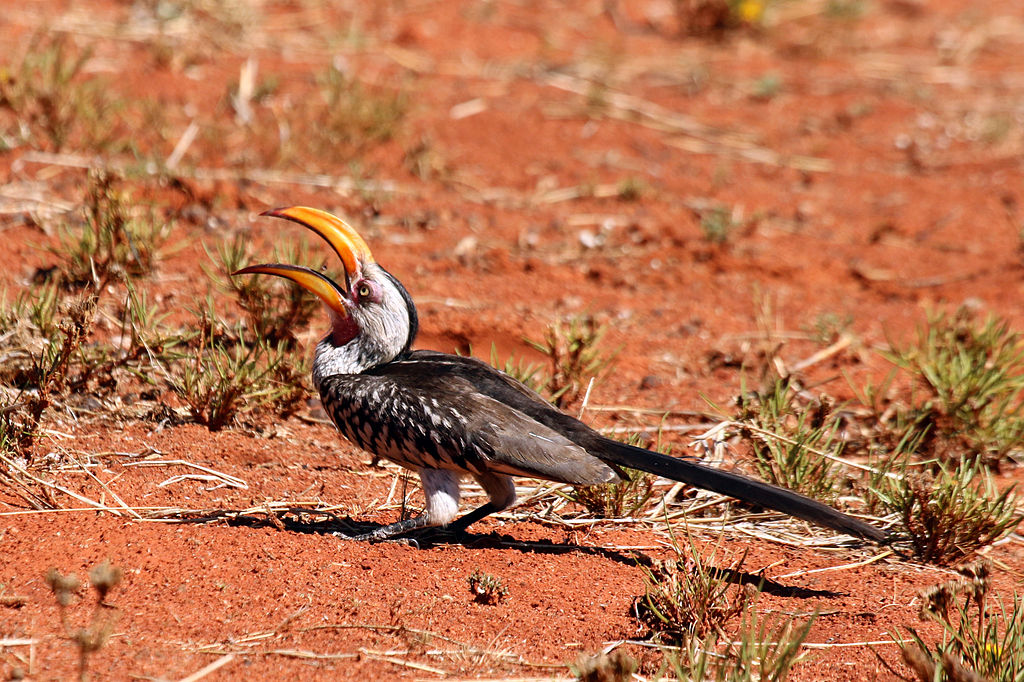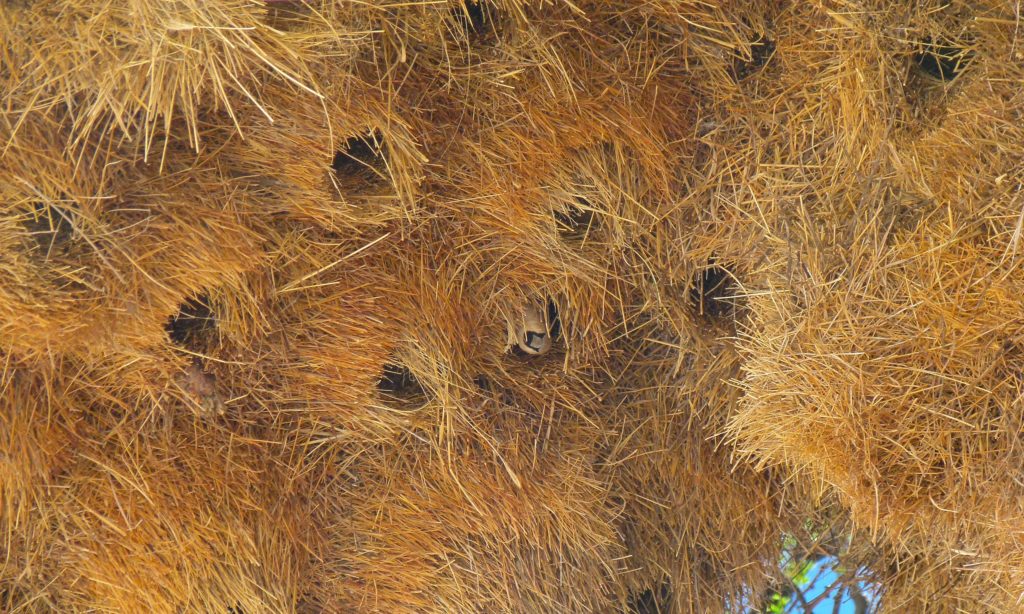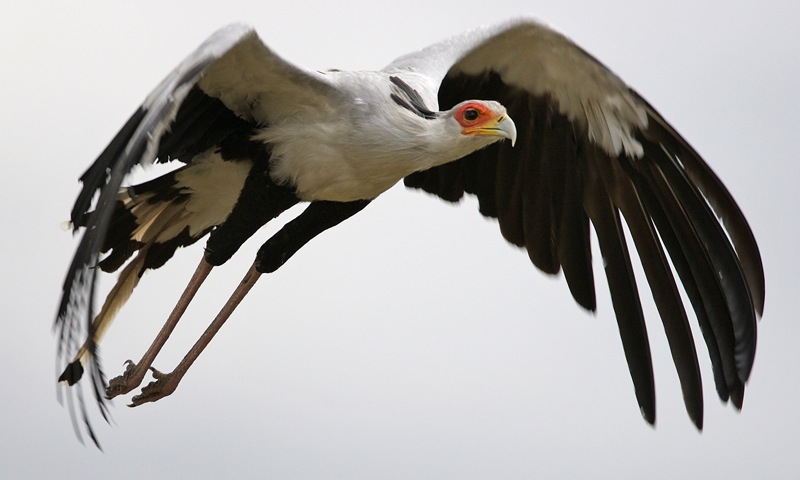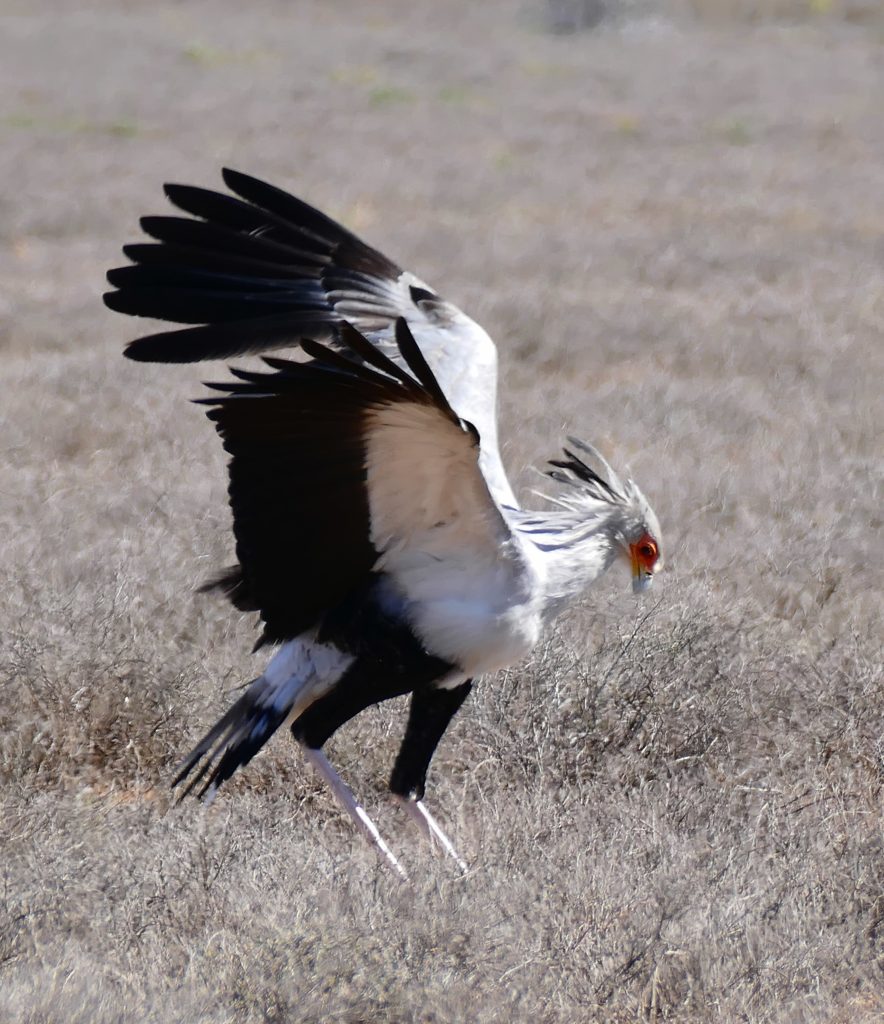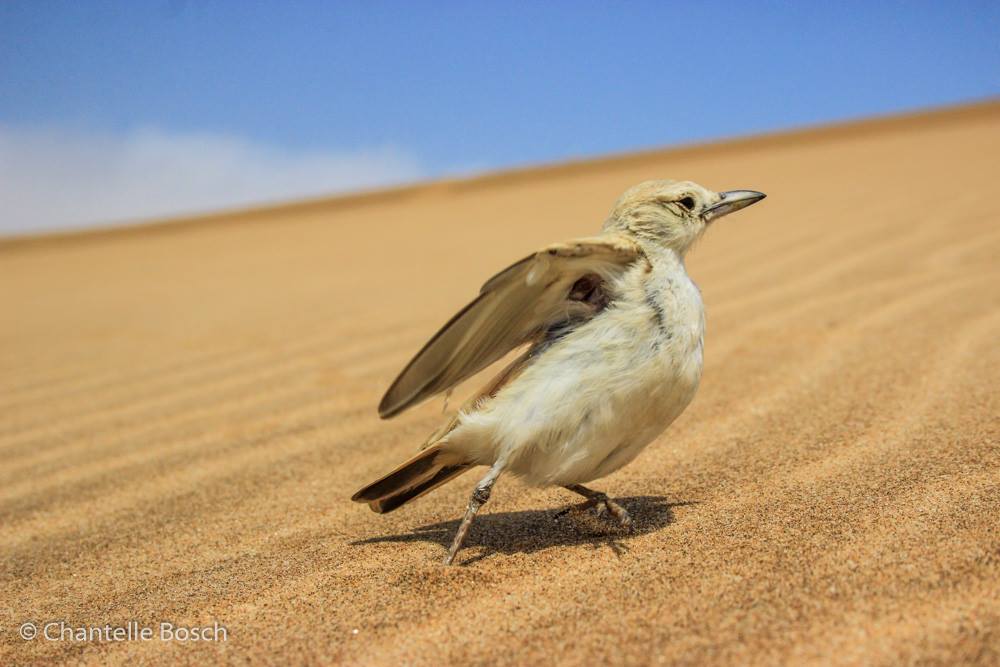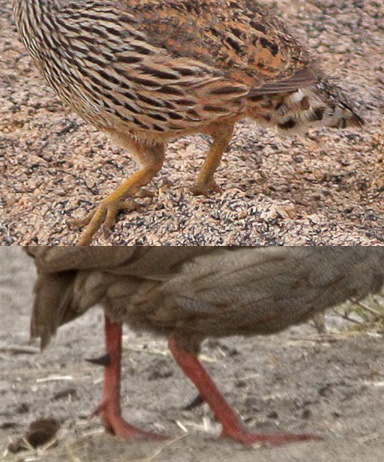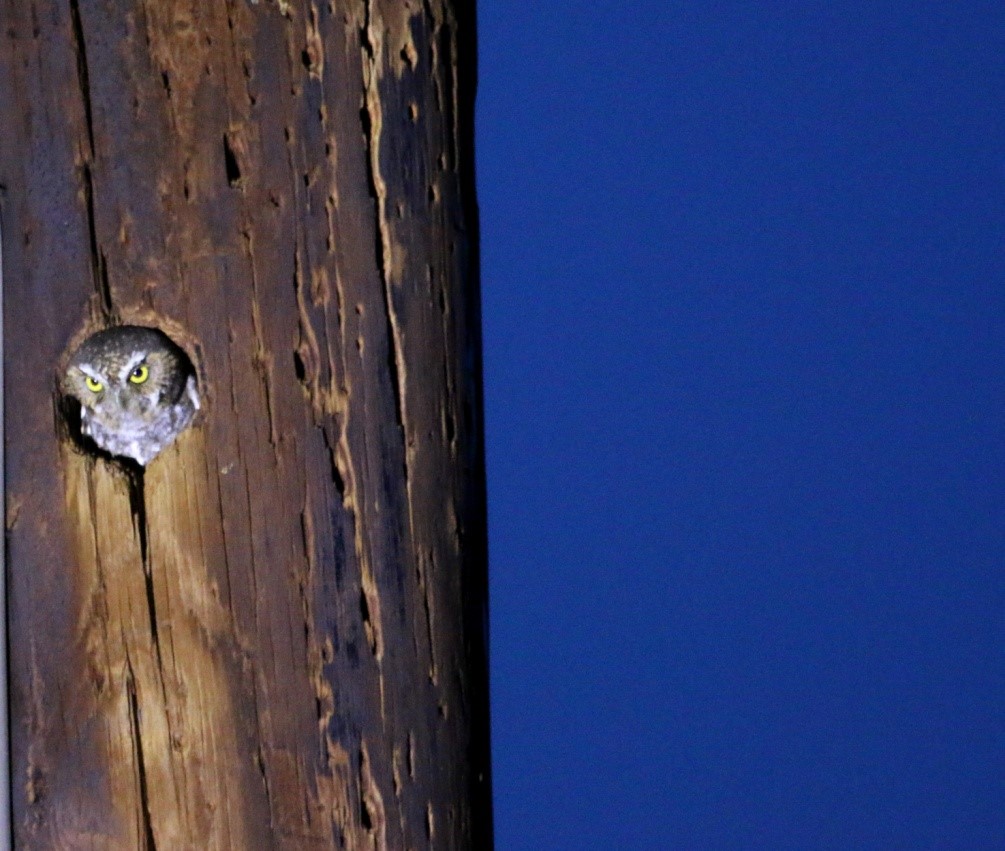The big banana-like beak of the Southern Yellow-billed Hornbill and its long fringe of “eyelash” feathers are not just defining characteristics of this iconic African species; they are adaptations, deployed by desert birds to battle climates others find inhospitable.
Desert Birds of Namibia
We see many hornbills and other desert birds and arid-land birds on our trips that include Namibia:
Ultimate Namibia-Botswana Combo: Birds, Wildlife & Landscapes
July 23 – August 15, 2022
Grand Namibia: Birds, Wildlife & Landscapes
October 13 – 25, 2022
Every desert has birds, even when it has little else, as British explorer John Philby saw for himself in 1932 crossing the Arabian Desert by camel train. Setting off with an increasingly disgruntled crew and 32 camels in the midst of a 30-year drought, the only plants the search party found were dead. Yet somehow, there were animals still calling the desert home, among them many Hoopoe Larks, according to The Ohio State University researchers who study adaptations of desert birds.
Larks are one of the most common desert birds, and ecologists study them closely to see how they prevail in such austere conditions, including “intense solar radiation; extreme air temperatures; low relative humidity; scant, unpredictable rainfall; and meager primary productivity,” as the OSU researchers wrote in “Physiological Adaptation in Desert Birds,” published in 2005 by the journal BioScience.
“For inhabitants of these environments, food supplies and drinking water can be scarce. In such extreme habitats, there may be strong selection pressures on the physiological attributes of animals that live there, especially adjustments that minimize rates of energy expenditure or water loss, or that enhance tolerance of high body temperature,” the researchers wrote.

Consider the Dune Lark, a Namibia endemic we have chances to see, which deploys a three-part survival secret recipe. It’s one part “pre-adaptations,” shared by most birds, like having a naturally high body temperature and being able to fly to get water. Dune Lark also help themselves behaviorally by nesting on dry stream beds, which serve as unobstructed flight corridors, reducing energy output. Finally, unusual subcutaneous fat deposits in the sun-facing part of their wings are believed to represent physiological adaptation to arid conditions, reducing evapotranspiration to retain precious water.
But the lark family is just one among a rich variety of desert and adjacent arid-land birds displaying a staggering array of adaptations. Many, naturally, are focused on conserving water or regulating temperature – and not just heat, but cold, since deserts demonstrate dramatic temperature shifts between day and night.

Behavioral adaptations dictate the pace of our tours, as we go out early to catch diurnal birds at their most active, at dawn and dusk, resting like they do during the hottest part of the day. But the physiological adaptations of desert birds are perhaps the most fascinating.
Coming back to the charismatic hornbills, they are able to shed heat by dilating the vascular structure beneath their hard keratin bills, whose large surface area offloads unwanted body heat like a radiator. This adaptation reduces their need to open their bills and pant, an evapotranspirative cooling method which by definition squanders precious water resources.
Other adaptations address different environmental conditions, like their feathered “eyelashes” which, according to some theories, help keep things out of their eyes, including blowing sand or glaring sun.

In a further nesting adaptation that is part behavioral and part physiological, the Southern Yellow-billed Hornbill female dens up with the chicks, walling its developing family off from the sun and nighttime chill. Typically starting with an existing hole or crevice in rocks or a tree, the hornbill pair line it with nesting material.
They then work together using an ‘adobe’ made of food scraps, excrement and whatever mud the male can find and bring back to help seal in the brooding female. They leave a “feed us” sized hole that the male hornbill pokes food through and the female, waste.

Protected or imprisoned, depending on your viewpoint, the female has the capacity to voluntarily shed her flight and tail feathers to make movement easier on their now-feathered carpet. She will slowly regrow them before emerging with the chicks.
Hartlaub’s Spurfowl has devolved its titular fighting mechanism, preferring to conserve precious resources by hiding from predators between rocks in the granite outcrops where it nests. Its spurs are little more than bumps now.
Another African desert bird, the Freckled Nightjar, has evolved a high tolerance to both heat and cold. They manage to survive surface temperatures on their rocky outcrop nesting grounds of up to 60 C/140 F, and yet, in the colder winter months, can also enter torpor, a form of short-term hibernation that conserves energy, warming back up to an animated state with sufficient sunshine. Like other desert birds and nightjars, in times of great heat, they may engage in “gular flapping” behavior, fluttering throat skin with their bills mostly closed to help offload heat.
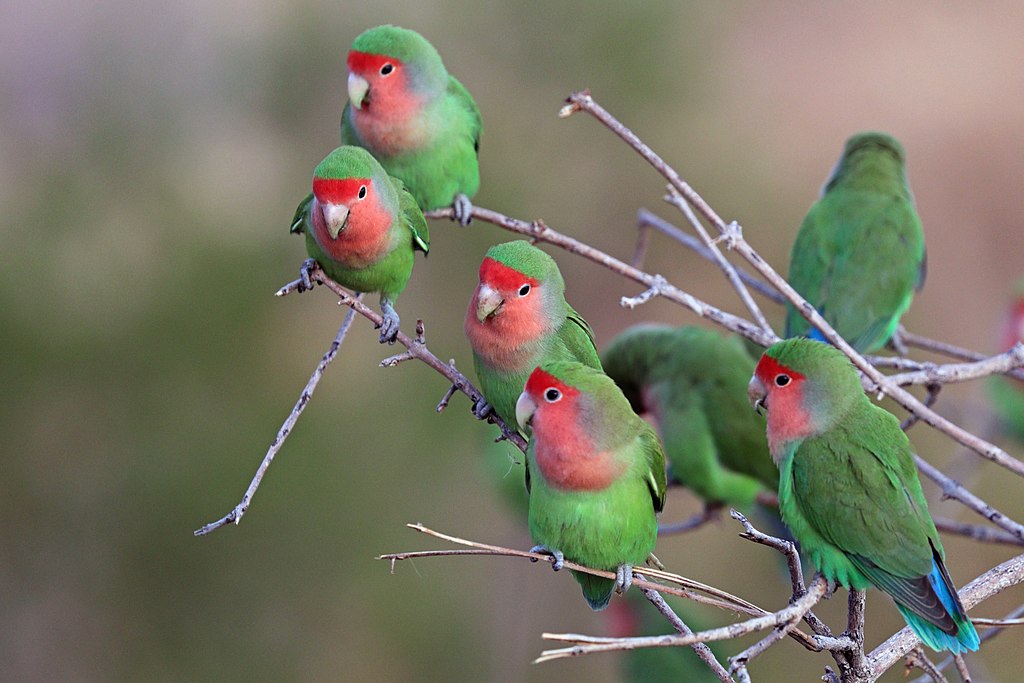
One of the most sought-after birds in Namibia is the Rosy-faced Lovebird, which inhabits arid-land areas that are flying distance to water sources. These short-tailed parrots charm with their namesake canoodling and have been known to opportunistically try to “get a room” inside the massive apartment-complex nests of the Sociable Weaver.
They thereby hitch a ride on the weavers’ behavioral adaptation to beat the heat. They build multi-chambered suites that are an upgrade from the studio apartments most birds use, with interior rooms used for warm nighttime roosting and exterior rooms providing mostly shade.

Though we don’t see them on our Arizona tours, there is a sizable feral Rosy-faced Lovebird population outside of Phoenix, having moved from wild to pet to wild again. Failing to find Sociable Weaver apartment complexes in the Wild West, they continue to seek out existing nests made by other birds, like the cavity nests made by Gila Woodpecker and other desert bird species in Saguaro, Barrel, and other cacti.
Arizona Desert Birds
Native desert birds, each with their own clever adaptations, are plentiful on our two spring and three fall tours of Southern Arizona.
The Greater Roadrunner has some things in common with the Secretary Bird, both snake-hunters capable of flight but preferring to walk or run after prey, up to 20 mph in the Greater Roadrunner’s case. That’s roughly half the top speed of their coyote predators, with flight as a solid escape plan in reserve. Like some marine species, roadrunners are able to excrete salt through glands in the nose, because passing salt requires substantial water. A roadrunner also uses its dark skin to help regulate temperature, spreading its wings and fluffing its feathers to expose this ‘solar panel’ when they want to invite the warmth of the sun, and re-covering it like a parasol, when they’ve had enough.
Costa’s Hummingbird, one of the world’s smaller hummingbirds at just over 3.5 inches, can, like the Freckled Nightjar, enter torpor, greatly slowing its heartbeat and maintaining a lower body temperature. During torpor, a Costa’s heart beats just 50 times per minute, a fraction of the 500–900 times it beats while active, according to Cornell University’s All About Birds.
We may also see tiny Elf Owl on our Arizona tours, nesting in tree hollows and other cavities to stay warm during cooler nights. The Cactus Wren will often nest in the branches of a Cholla cactus, taking its spiny defense for its own against predators not small enough to slip past them.
To decide whether desert Africa is the right journey to the continent for you, we have written a guide for how to choose a birding tour to Africa.
And of course, our travel planners are always happy to talk with you about any of our tours! Email us at travel@naturalistjourneys.com or call 866-900-1146.


